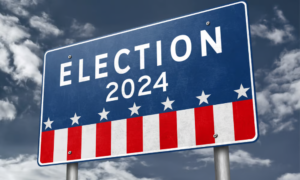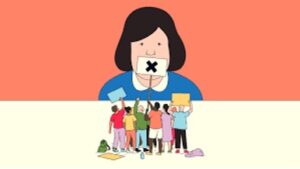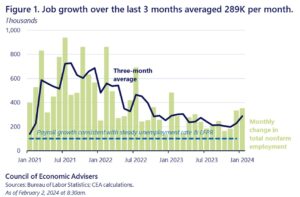
Five Contrarian Truths About Behavior Modification
I’ve been thinking about a thesis I cooked up about a year ago, which, if it continues to feel valid as I write about it, will become a book.
The thought is this: We (as individuals and citizens and as members of social organizations and religious groups) spend a not insignificant amount of our time, energy, and money trying to improve the world by improving people who have tendencies and habits we judge to be unhealthy, unwanted, and/ or destructive.
Just in terms of well-known national and international organizations, we have a plethora of programs for alcoholics, drug addicts, and overeaters, plus anger management programs, dozens of programs whose purpose is to prevent criminal recidivism, and even programs for people that are addicted to sex.
This would make sense if these programs worked – if they were largely successful in effecting the desired change. But most of them are not.
Take, for example, programs for treating drug and alcohol addiction. The success rate is very low. So low that it is difficult to find the numbers, because the organizations that make their money running such programs don’t want the public to know how unsuccessful they are.
If you spend several hours digging and verifying the numbers you are able to find, you will discover that the 12-month success rate for alcohol and drug rehabilitation is about 15%. Put differently, drug and alcohol recovery organizations fail in achieving their goals at a rate of about 85%.
The War on Poverty, started by President Johnson in 1964, was a massive government initiative of more than 40 individual programs. There are plenty of phony ways to measure the success of that program that show positive results. However, if you look at the only metric that is honest – the “absolute poverty line” (the threshold below which families have insufficient income to provide the food, shelter, and clothing needed to preserve health – the rate has fallen insignificantly: from 10.5% in 1966 to 10.1% today.
The War on Drugs, started by President Nixon in 1971, is another big one. In June 2011, the Global Commission on Drug Policy released a critical report, declaring: “The global war on drugs has failed, with devastating consequences for individuals and societies around the world.” In 2015, the Drug Policy Alliance, which advocates for an end to the war on drugs, estimated that the US spends $51 billion annually on the effort to stop illegal drug use. In 2021, after 50 years, others have estimated that the US has spent a cumulative $1 trillion on it.
The result? More Americans are taking illegal drugs than ever before, and the number of Americans incarcerated for illegal drug use has risen 500% since 1971.
Question: Is there anything that you would commit your time and money to if you knew the failure rate was that high?
It’s said that doing the same thing over and over and expecting different results is the definition of insanity. You can attempt to open a locked door by continuously slamming your head into it. But if, after your first attempt, the door stays firmly shut, slamming your head into it even harder makes no sense.
You would have to be an absolute idiot to believe that if we kept on with the same enormously expensive programs, they would one day achieve their goals. Yet that is exactly what we have been doing… for more than 80 years!
The reason is simple: the irrational but persistent belief that we – as individuals or organizations – can change (improve) unfavorable behaviors of people to any meaningful degree.
I believe there is a better way to deal with the massive failure rate of these programs. And that is to give up, once and for all, the false belief that, in a free country, anyone other than the sovereign individual can change his or her behavior.
Here are a few axioms to consider:
1. When it comes to character flaws, negative temperament, and bad habits, adult Homo sapiens seem to be almost incapable of change. Whether the issue is drug or alcohol addiction, overeating, leaving the toilet seat up, or general grouchiness, the percentage of people that successfully and permanently change are few and far between. Despite this obvious fact, most people, including educated people, refuse to believe that other people can’t change.
2. Trying to beat the odds by scolding or cajoling someone into changing their ways does no good at all. On the contrary, it usually has two bad results: It reduces the very slim chance that the person you are trying to change will change. And it creates a void between the two of you that is almost always filled with lying, anger, and resentment.
3. If you love the people in your life in whom you want to see change, begin by asking yourself if you would feel better if your relationships with them got worse or ended. Because that is, again, the most likely outcome of trying to change them.
4. If the answer to the above question is no – i.e., that you would not like to further damage or destroy your relationships with people you care about – the only reasonable thing to do is accept those things you don’t like about them. And even – if those things are annoying rather than damaging (to you or to them) – find a way to enjoy them.
5. If the behavior you want to see changed is damaging and destructive (to one or both of you), the only thing you can do is end the relationship gently but firmly. You must say goodbye. And you must mean it.
I know how futile and possibly depressing this may sound. But I’ve found that letting go of the mythology of change is very positive. I’ll talk more about that next week.
It’s a Serious, Scientific Catalog. So… Is This a Joke?

I was paging through one of my catalogs on trees this morning and I came across this entry for Woman’s Tongue Tree (Albizia lebbeck), otherwise known as East Indian Walnut: “This tree is well known for producing an abundance of long, brittle pods containing small seeds which, when driven by a light breeze, rattle endlessly. What connection this might have with a woman’s tongue is not clear.”
Aging Anecdotes: Forgot Your ID?
AS writes to say: “I was making a purchase today and the 50-something clerk asked me for ID. I didn’t have my license on me and told him so. Then I said, ‘What do you think could possibly have happened to me in my life that I could look like this and still not be 21?’ He took another look at me and said, ‘All right, forget it.’”













